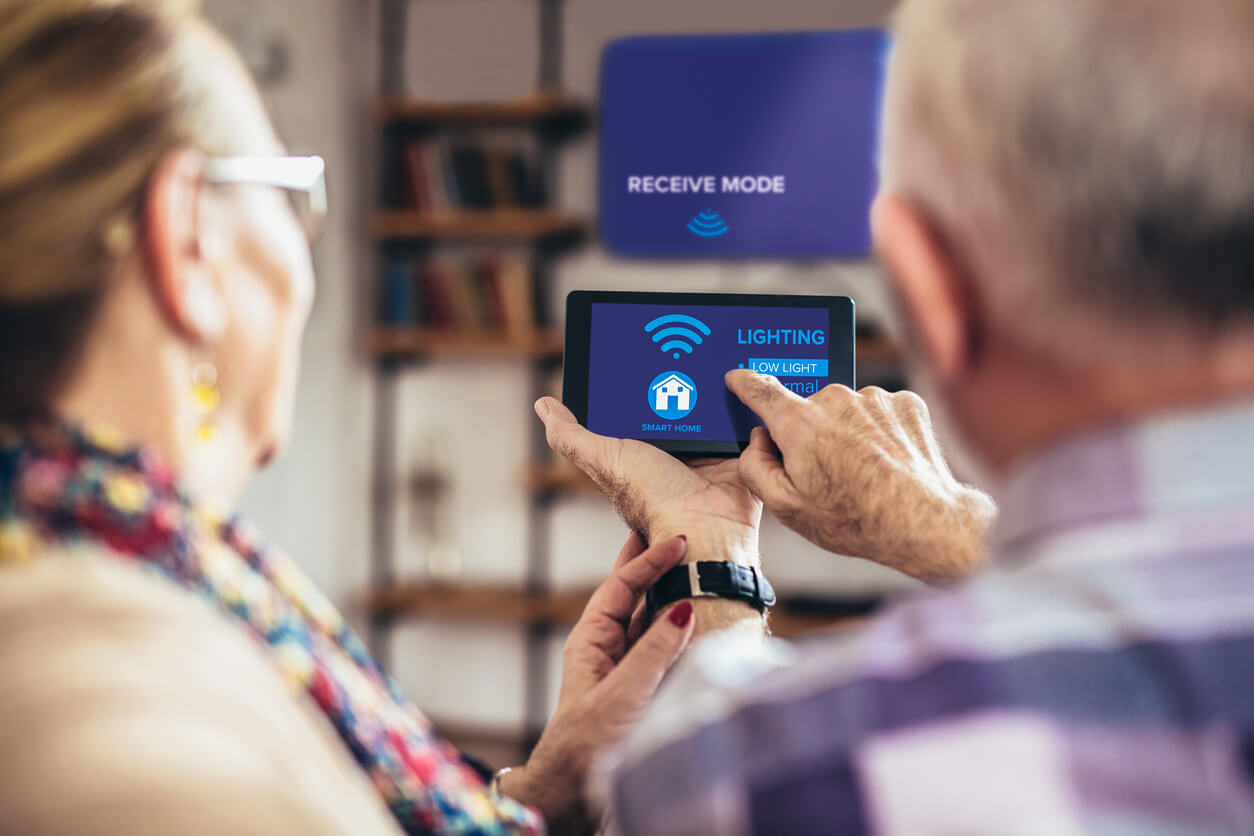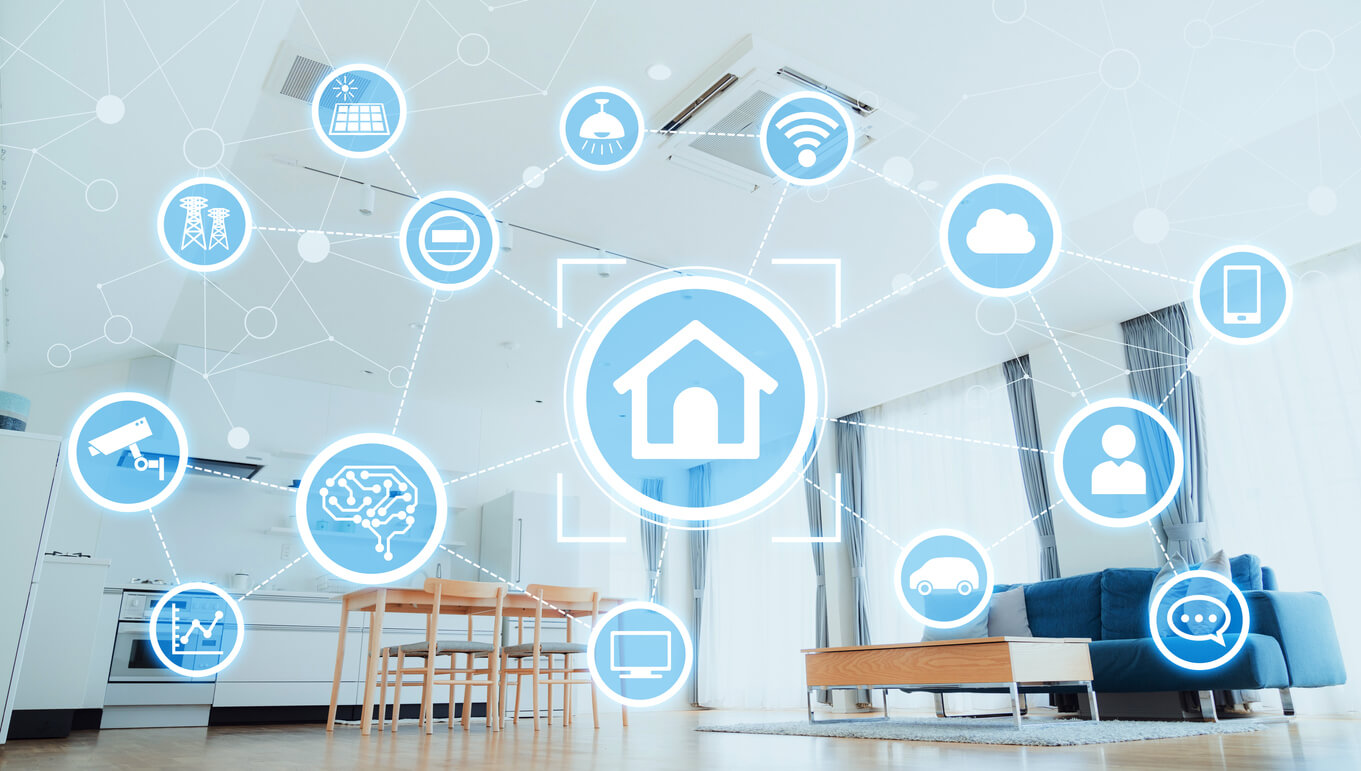Changes in elderly care have meant that older people live at home longer. Electronic tools and home automation are used to support them. In this article we look at the visions of the parties involved in the care of the elderly. We look at the opinions of older people, caregivers, producers and policy makers about electronic tools and home automation, and the interactions within these groups.
At the beginning of 2015, the Dutch Government radically changed the care system for elderly care. The wish is that people stay at home longer and do more themselves. The aim is to reduce the increasing demand for care for the elderly and to save costs. Older people can only be admitted to a care home if they have received an indication that they really need to be cared for 24 hours a day. The rest can receive support at support and have to rely on their own environment and savings.
However, the growing population of elderly people, the chronic shortage of staff in (long-term) elderly care and the lagging amount of available economic resources are not typical Dutch phenomenon. Worldwide, there has been an increase in awareness that there is an (economic) need for interventions that support older people in their needs. One of these interventions consists of the implementation of (cost-saving) technological and electronic aids in the care of the elderly. These tools ensure that older people can stay at home as long as possible.
In general, older people have a strong aversion to admission to a care home. They are attached to their own home, memories and possessions. 90% of the elderly say they prefer to live in their own environment in a home of their choice, without moving when the need for care changes. In literature, this is called “aging in place”.
Older people need and want to live at home longer. In order to ensure that they can actually do so, rapid advances in electronics, as well as information and communication technology, are used. Evidence that technological and electronic devices have the potential to support older people growing old at home has been growing since 2005. As a result, there has been strong growth in its development over the last ten years.
Text continues below the image.

The electronic tools that ensure that older people retain their functionality and can continue to live independently can be divided into a number of categories. For example: in-house monitoring and management, and medication and health monitoring and management. With resources from the first category, it is ensured that older people can live as safely as possible in their own homes. Think of motion sensors and security devices, such as alarms, locks and cameras. With devices in the second category the health of older people is monitored and managed. Often these devices are used after discharge from the hospital, in case of a (life-threatening) chronic illness or when medications are not taken (according to prescription).
In the context of unambiguousness, no distinction shall be made between the various types of electronic devices in the rest of this article. Instead we will use the term home automation to cover all devices. Home automation concerns the integration of technology and services for a better quality of living and living. Home automation does not only concern integrating technology into the home, but also includes acquiring services from outside to the home.
Home automation used in elderly care ensures a greater quality of life. For example, by warning (early) of a declining health, intervention can take place on time and hospital visits can be prevented. This also applies to (chronically) ill people: electronic devices allow diabetes patients to better regulate their blood sugar levels, asthmatics can reduce their symptoms, and heart and COPD patients can avoid hospitalization.
The implementation of home automation in the care of the elderly entails a (desired) cost saving that does not come at the expense of the health and safety of those in need. For example, determining the health status of the elderly through these electronic devices improves the quality and variety of information sent to the healthcare provider. The combination of these accurate predictors of health risks and up-to-date information, together with alarm systems, ensures better decisions of healthcare providers. They are also able to assist many more people in a shorter time and, for example, to save travel costs.
Despite the many advantages, home automation is not yet very widespread in elderly care. Factors influencing the decision of older people to try new technology are the anticipated benefits, the difficulty in use, the assessment of whether the technology can cause harm and the availability of alternatives. The support of others and their own attitudes and principles, including the need to grow old at home, are also important. Older people who want to grow old at home are more likely to accept technology.
Caregivers are the main gatekeepers when it comes to home automation in the care of the elderly. As a result, they play an important role in their implementation and dissemination. Although the acceptance of these electronic devices among healthcare providers is relatively high, they make little use of this type of solution. Possible reasons for this include high costs, privacy issues, lack of connection with existing routines, and lack of perceived utility. Especially perceived utility has a major influence on the attitude of caregivers. This can be enhanced by improving the compatibility of home automation with existing processes and routines.
In general, slow implementation of home automation in elderly care is due to an incomplete understanding among all concerned. Uncertainty about the best way to develop, coordinate and maintain it is also important. To address these problems, interventions are needed that focus on the user and provide technical assistance. In addition, caregivers should receive training and the care system must possess the needed infrastructure. Finally, it is conducive to bringing all parties involved together and to remove uncertainty about accountability in the implementation of home automation in elderly care.
Older people often have a positive opinion about home automation. They argue that it is a valuable tool with great potential. They would actually use it when they perceive it as useful or when it can fulfil a certain need. Older people generally state that these electronic devices do not interfere with daily activities. They also have little to no concern about their privacy. Home automation enhances for them the experience of home as a place of significance, and unique personal and social meaning. Also, older people see that time and money can be saved by reducing hospitalisation and doctors’ visits, something that they of course prefer. Finally, the opinion of older people on home automation also shows that they see the shorter waiting times and improved access to care as positive outcomes of the implementation of electronic devices.
The opinion of older people on home automation shows that these tools have to meet a number of specifications in terms of use and design to be useful. For example, the number of devices and cables should be minimized, the devices have to be easy to operate, and the installation should be done in an acceptable and unobtrusive way, which does not affect the feeling of home.
Text continues below the image.

Caregivers are largely positive about home automation and see many benefits. A large proportion of them believe that these electronic devices can help them work effectively and efficiently, and improve their performance, without jeopardizing the relationship with the elderly. They also argue that home automation helps to bring care to hard-to-reach and remote areas.
However, caregivers sometimes have fears about the safety and reliability of home automation. Something that is of great importance to them is thorough training of personnel and support by a technical team. In addition, they are particularly concerned about possible disruption of routines and increased workload. They argue that these problems can be solved by a good design in which data is summarized and presented in such a way that it fits seamlessly into their routine.
Barriers to implementation also have to do with uncertainty about coherent and sustainable service and business models. The lack of financial or other incentives to include home automation and the lack of continuity with other services also play a major role. Caregivers ask for clear communication and defined responsibility between different parties.
A good relationship between care providers and the elderly is very important for successful implementation of home automation, as these devices is only accepted when there is a bond of trust. In any case, acceptance of these electronic devices by caregivers (and relatives) is of great importance for the opinion of the elderly about home automation. The success of home automation depends on the extent to which its design and implementation makes older people active participants in monitoring and managing their health. Older people need to be better informed about (the placement of) electronic devices and better integration into care. In any case, healthcare providers should be able to answer general questions about the technology.
Producers are wondering how to market home automation and to whom. The lack of (clear) guidelines and policies leads to difficulties in maintaining shared commitment. Producers are all grappling with uncertainties about who is responsible for the implementation of these electronic devices. One issue here is the lack of integration into healthcare, which creates different markets with different rules and regulations, as well as different bodies with professional knowledge, and different evaluation criteria, technical expectations, funds and cultures. Producers would like to see healthcare providers and policy makers be more involved in home automation.
Policy makers are in favour of the further development and commercialisation of home automation. However, there are still concerns about user-friendliness, reliability, privacy and affordability, which leads to a lack of (sustainable) financing.
Despite the benefits of home automation, implementation is not yet widespread. The opinions of all parties involved (the elderly, caregivers, producers and policy makers) regarding electronic devices are all (cautiously) positive. However, these opinions do not exist in a vacuum, but interact with each other. All parties have certain wishes regarding the role of the others:
It is important to take into account the opinions and wishes of the parties concerned. Only then can home automation fulfil its potential and assist the elderly in the successful age of their home.
You can find more English articles in our blog.
Other articles you might enjoy:
Living at home with dementia
Housing wishes of the elderly – the home and environment
What is the IoT (Internet of Things): An introduction
What is AI (Artificial Intelligence): An introduction